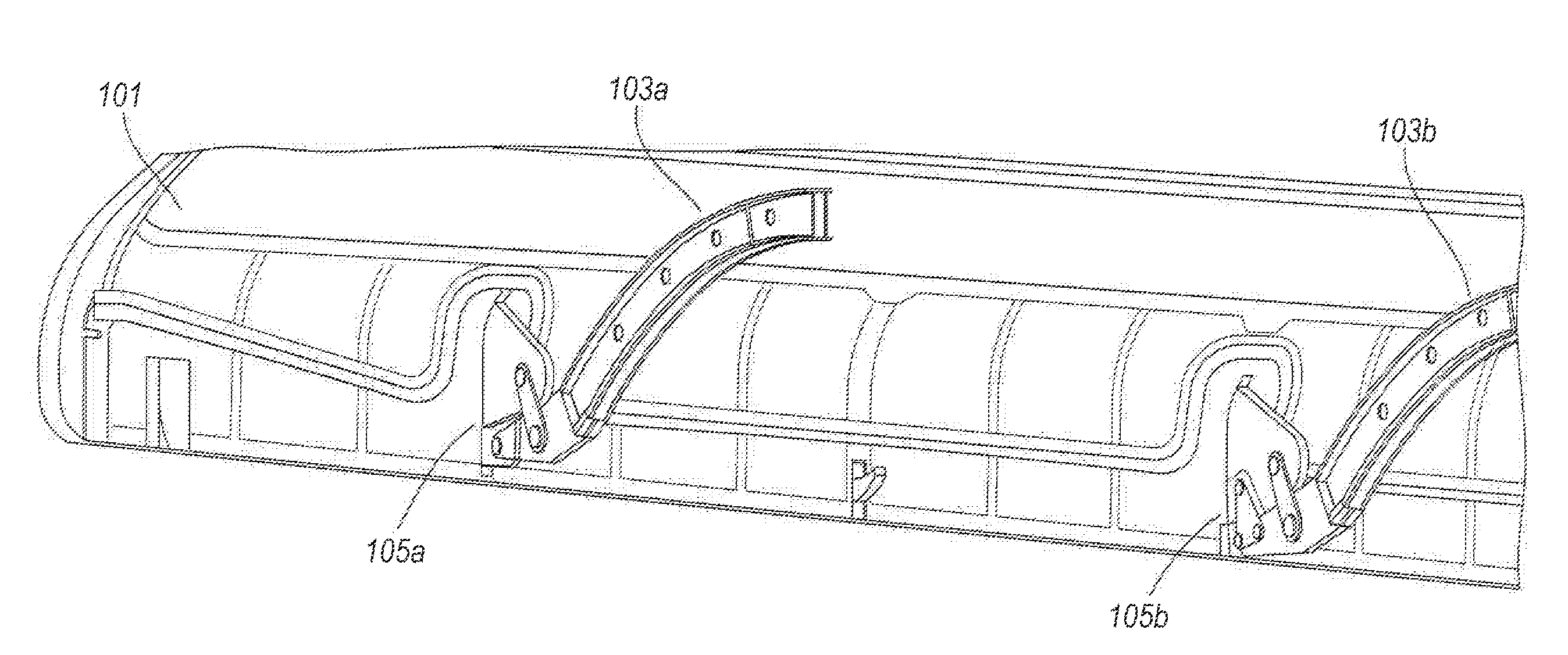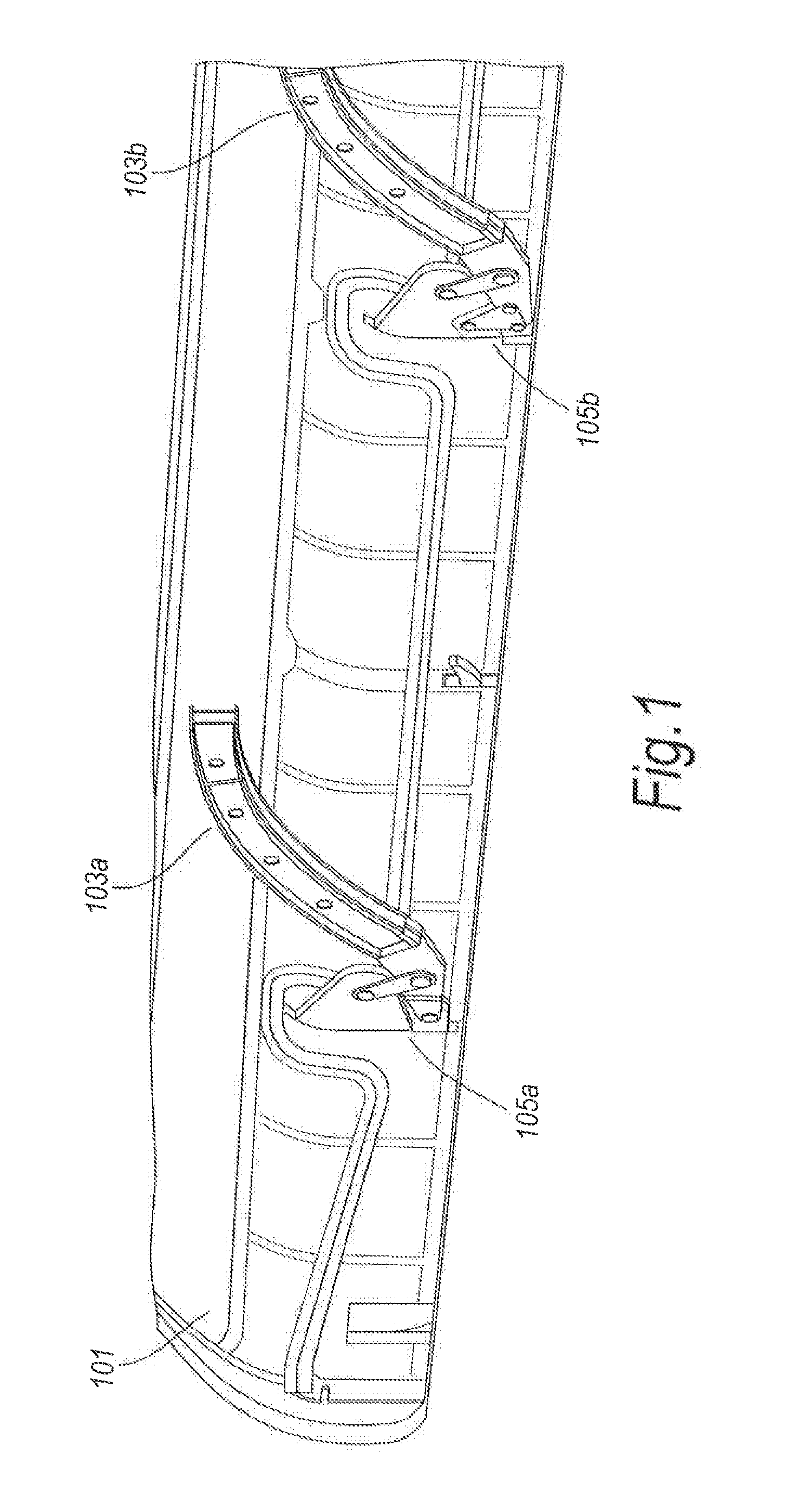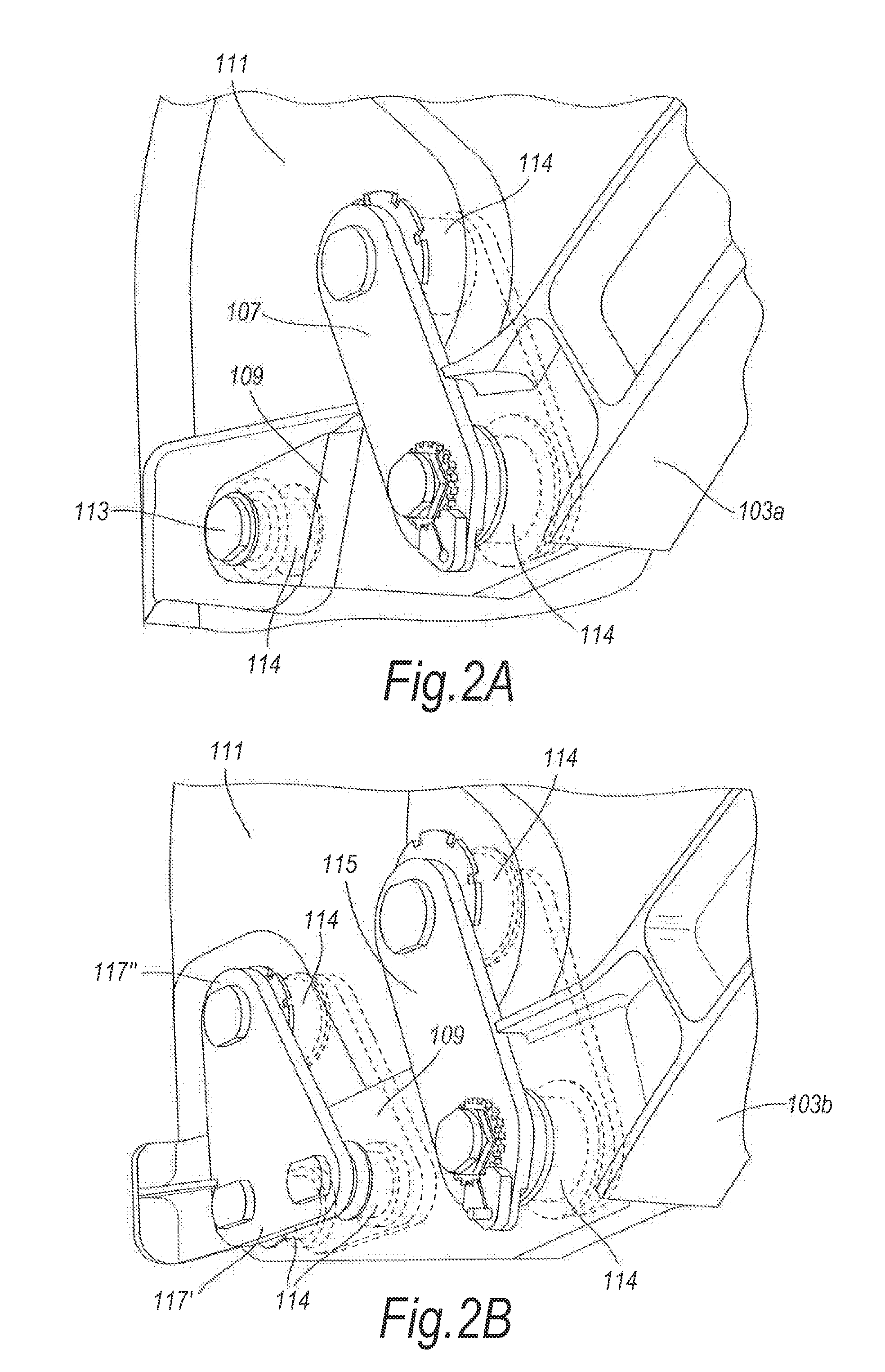Aircraft slat assembly
a technology for slats and aircraft, which is applied in the direction of wing adjustment, wing position indicators, and movable aircraft elements, etc., can solve the problems of excessive load, link interference with the lugs of the slat/track, and new airworthiness requirements that may now require the failure of actuators to be considered, so as to reduce the risk of joints being damaged by excessive skew
- Summary
- Abstract
- Description
- Claims
- Application Information
AI Technical Summary
Benefits of technology
Problems solved by technology
Method used
Image
Examples
Embodiment Construction
[0031]FIG. 1 is a rear perspective view of a known slat assembly. The assembly comprises a slat 101 connected to two arcuate tracks 103a, 103b mounted on a fixed wing structure (not shown). The tracks 103a, 103b are moveable relative to the fixed wing between an extended position in which the slat is deployed, and a stowed position, in which the slat is stowed on the fixed wing leading edge. The assembly comprises actuators (not shown) for moving the tracks 103a, 103b by way of a rack and pinion connection (not shown).
[0032]The tracks 103a, 103b are connected to the slat 101 by joints 105a, 105b (sometimes referred to as knuckle joints). In this known design, the first track 103a is connected to the slat 101 by a master joint 105a and the second track 103b is connected to the slat 101 by a sub-master joint 105b. The master joint 105a is shown in more detail in FIG. 2A and the sub-master joint is shown in more detail in FIG. 2B.
[0033]Referring first to FIG. 2A, the master joint 105a ...
PUM
 Login to View More
Login to View More Abstract
Description
Claims
Application Information
 Login to View More
Login to View More - R&D
- Intellectual Property
- Life Sciences
- Materials
- Tech Scout
- Unparalleled Data Quality
- Higher Quality Content
- 60% Fewer Hallucinations
Browse by: Latest US Patents, China's latest patents, Technical Efficacy Thesaurus, Application Domain, Technology Topic, Popular Technical Reports.
© 2025 PatSnap. All rights reserved.Legal|Privacy policy|Modern Slavery Act Transparency Statement|Sitemap|About US| Contact US: help@patsnap.com



